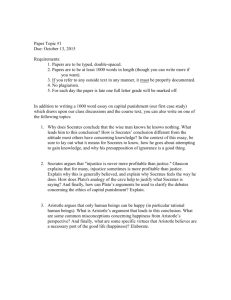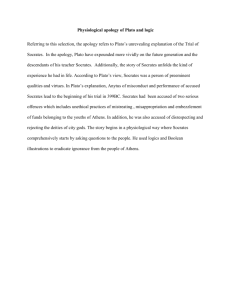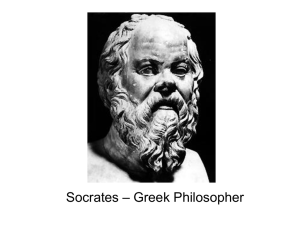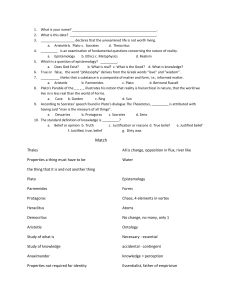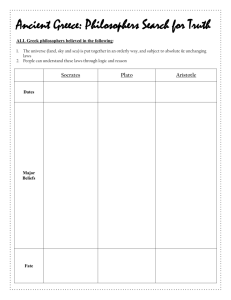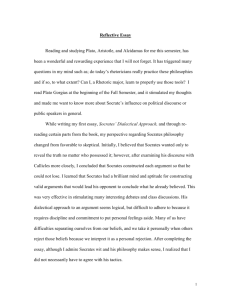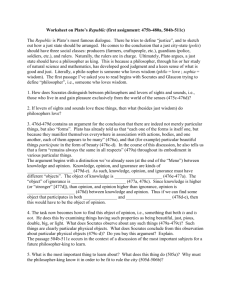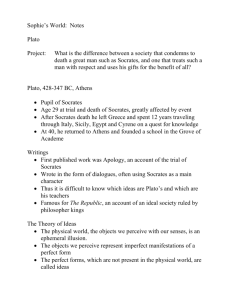Study Questions on Plato`s Parmenides
advertisement
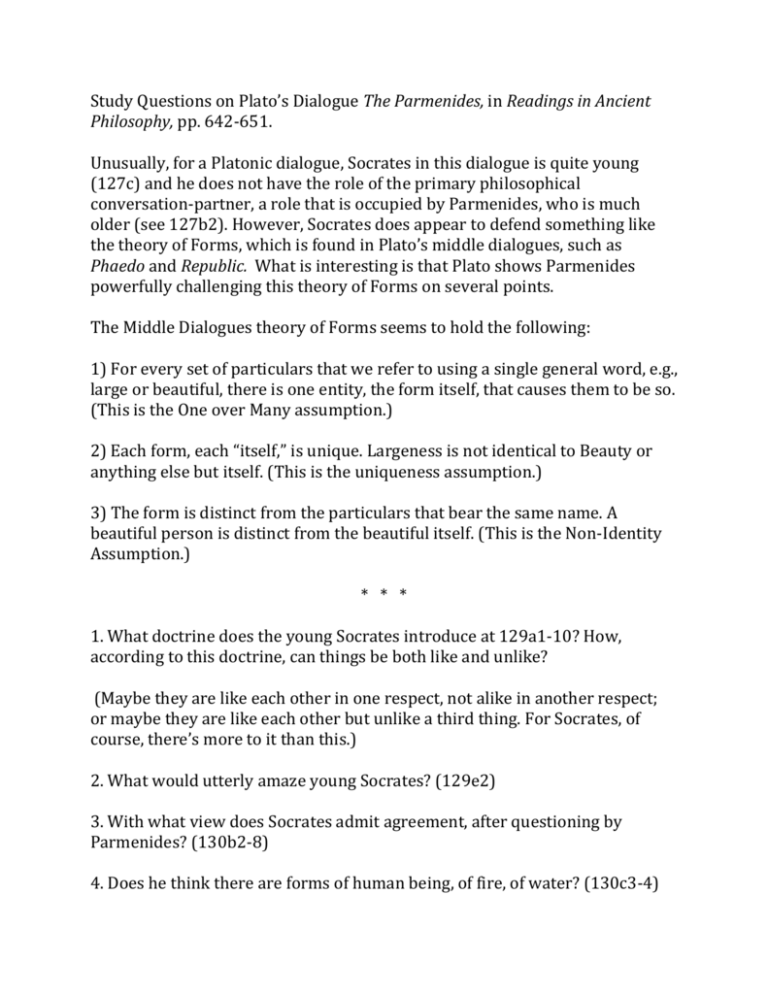
Study Questions on Plato’s Dialogue The Parmenides, in Readings in Ancient Philosophy, pp. 642-651. Unusually, for a Platonic dialogue, Socrates in this dialogue is quite young (127c) and he does not have the role of the primary philosophical conversation-partner, a role that is occupied by Parmenides, who is much older (see 127b2). However, Socrates does appear to defend something like the theory of Forms, which is found in Plato’s middle dialogues, such as Phaedo and Republic. What is interesting is that Plato shows Parmenides powerfully challenging this theory of Forms on several points. The Middle Dialogues theory of Forms seems to hold the following: 1) For every set of particulars that we refer to using a single general word, e.g., large or beautiful, there is one entity, the form itself, that causes them to be so. (This is the One over Many assumption.) 2) Each form, each “itself,” is unique. Largeness is not identical to Beauty or anything else but itself. (This is the uniqueness assumption.) 3) The form is distinct from the particulars that bear the same name. A beautiful person is distinct from the beautiful itself. (This is the Non-Identity Assumption.) * * * 1. What doctrine does the young Socrates introduce at 129a1-10? How, according to this doctrine, can things be both like and unlike? (Maybe they are like each other in one respect, not alike in another respect; or maybe they are like each other but unlike a third thing. For Socrates, of course, there’s more to it than this.) 2. What would utterly amaze young Socrates? (129e2) 3. With what view does Socrates admit agreement, after questioning by Parmenides? (130b2-8) 4. Does he think there are forms of human being, of fire, of water? (130c3-4) 5. How about forms for hair and mud and dirt? (130c5-d5) Note how the existence of Platonic forms seems to be associated with things that are not “just what we see.” We can use the senses in a fairly direct way to pick out hair and mud and dirt, and nonrational animals can probably distinguish them. This tells us something about the rationale for Platonic forms. 6. Does Socrates think that a single form can be in many individual things without losing its unity? (131a-b) What analogy does he use? (b4-7) 7. What problem does Parmenides raise for the theory of Forms by modifying Socrates’ analogy slightly? (131b8-c7) Note: In other dialogues Socrates has defended the proposition that the intelligible Forms are each unique but particulars “that have the same name” are many, i. e., individual beautiful objects are beautiful because they partake of the unique Form he calls the beautiful itself. 8. What puzzle arises if we consider the large itself, i.e., the form that makes things large insofar as they participate in it, and it turns out to be divisible because of the analogy of a form to a sail that “covers particulars”? Or the small itself, and it turns out to be divisible? 9. What question is Socrates asked at 131e4-5? How does Socrates respond? (e6-7) 10. What view does Parmenides attribute to Socrates at 132a1-4? (This is a standard position defended by the mature Socrates in, say, Plato’s Republic.) 11. What does Parmenides ask now? (132a6-8) So how many forms of largeness are there? (see a10) By 132b1 how many other there? 12. What conclusion, unwanted by Socrates, do they reach at 132b2? 13. What view seems most likely to Socrates? (c12-d3) 14. How does an infinite series of forms emerge from this? (133a3: “a fresh form will never cease emerging.”) 15. What is the “main difficulty” that Socrates is going to have if he posits one form in each case every time he makes a distinction among things? (133b1134e4)
